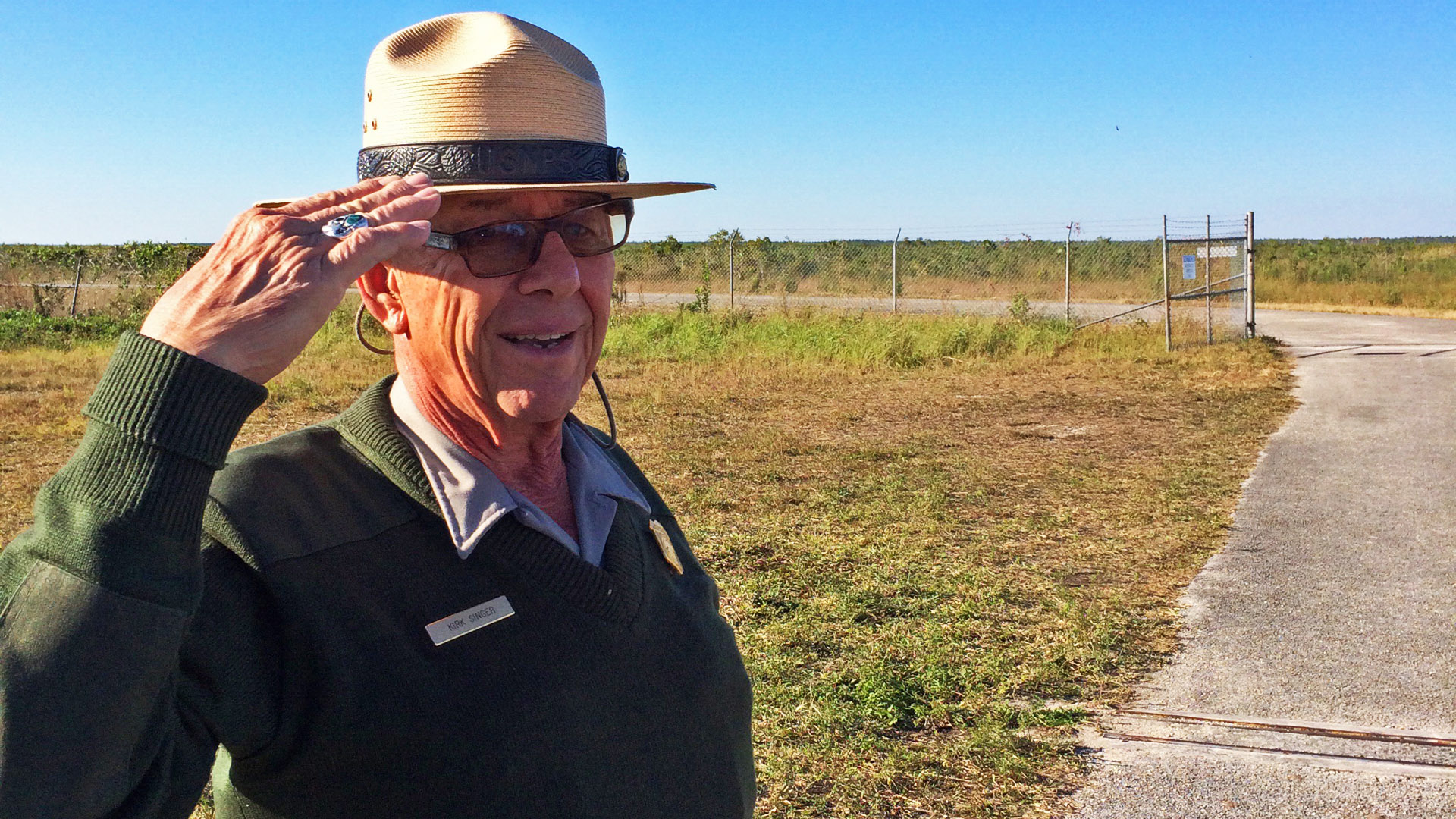
When Kirk Singer, a retired Marine Corp infantry officer, took a job with the National Park Service to lead tours of the Everglade’s missile site, it was a bit like coming home.
Upon entering Everglades National Park, fruit stands and swaths of farmland give way to a vast wilderness of skinny cypress trees and flat grassland – much of which is submerged in a few feet of water. Signs along the road warn motorists of the near-mythical Florida panther, a species of cougar whose wild population dipped to around 20 in the 1970s, before conservation efforts brought that number to around 160 today. Florida’s famous reptiles also thrive here, basking in the sun.

It’s in the middle of this landscape that I arrive at an old warehouse, with signs warning that trespassers will be shot on sight. This is the HM-69 Nike missile base, part of an expansive air defence system that once stretched across the United States. During the 1962 Cuban missile crisis, a small group of soldiers manned an arsenal of nuclear weapons here, scanning for an invasion of bomber aircraft entering US airspace from Cuba. They were under orders to “press the red button” were that day to come.
When 76-year-old Kirk Singer took a seasonal job with the National Park Service to lead tours of the missile site, it was a bit like coming home. In 1963, at the age of 23, he was preparing to potentially go to Cuba himself.

“I was going to be part of the invasion force with the Marine Corps hitting the beaches of Cuba,” Singer said. “That’s why I really got into [leading tours]. It wasn’t just an education for me; it was a memory, something that I participated in.”
Today, the retired Marine Corp infantry officer and military historian is widely admired, especially among those who’ve taken his tours. He believes it’s important to look at the bigger picture, often speaking critically of some of the United States’ actions in the decades leading up to the Missile Crisis, and Cold War policy in general.

“Some people get indignant when I criticise the United States for their imperialist activities in the Caribbean in the 1920s,” Singer said. “Others come up to me and shake my hand afterwards and say ‘thank you, somebody needed to say that.’”
The tour involves a walk through the site’s “A” battery, which housed a cluster of Nike missiles. Of the US’ 285 Nike missile sites, only four had an enemy aircraft on their radar and all were located in south Florida. This battery, where tours have been given during the winter months since 2008, was the last one in the US to close, in 1979. It once had six nuclear missiles on site, each with a power greater than the bombs dropped on Hiroshima.

The idea was that if several bombers were launched from Cuba in a major air invasion, they couldn’t waste time trying to shoot them down one by one. They would need to launch one of the Nike missiles equipped with a nuclear warhead and blow it up mid-air, taking out all the aircraft – and potentially raining nuclear fallout over south Florida – all at once. “The strategic theory was to sacrifice a few to save many,” Singer explained.
For years, the missile site was used as a storage space, before someone realized it was an important historic site and should be preserved. By that time, a handful of its buildings had already been torn down. Singer was part of a team of three that included a park service volunteer and a retired coast guard commander that first worked on developing tours.

As we made our way around the old buildings, most of which are still closed up, we got a glimpse of life on the base. Singer opened the sliding doors to an old hangar, revealing the old control and navigation systems. Outside the hangar, the former launch area is flanked on both sides by a steep embankment of dirt and gravel, serving as a kind of blast shield. These embankments have a high lead content, Singer explained, because they’re full of bullets that were used for target practice.

Originally from Ohio, Singer’s love of military history began in the Navy ROTC program. In 2003, he sold his sales business, bought an RV and began working for the National Park Service in seasonal gigs at parks around the country. Since then it’s been 26 straight jobs – five months on, one month off – traversing the country, and he’s returned annually to the Everglades for the last several years. He said he relishes any opportunity to learn more, and that he does these jobs for the love of it. He stresses the value of the national parks for more than just preserving great wilderness.
“The National Park Service is a protection of a heritage, it is a place where future generations can come and touch history,” Singer said.

If you liked this story, sign up for the weekly bbc.com features newsletter, called “If You Only Read 6 Things This Week”. A handpicked selection of stories from BBC Future, Earth, Culture, Capital, Travel and Autos, delivered to your inbox every Friday.
5 Replies to “A US national park that once held nukes”